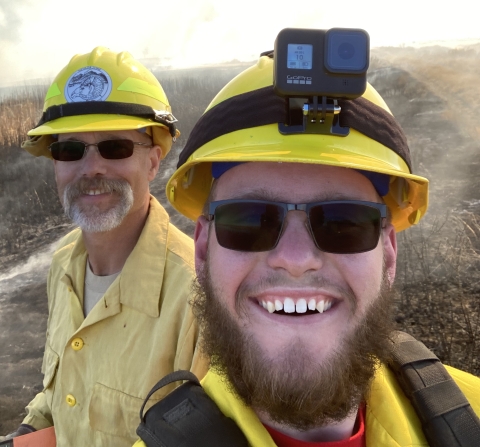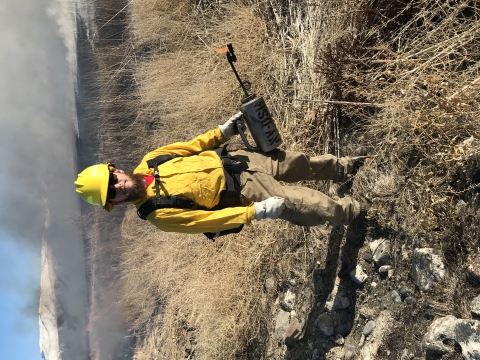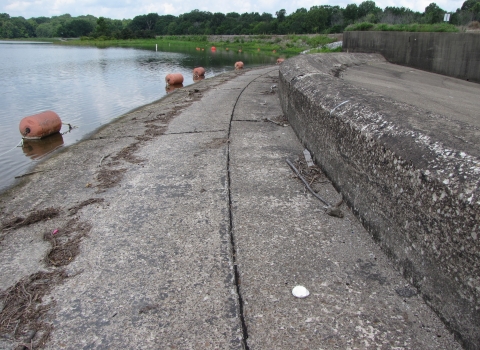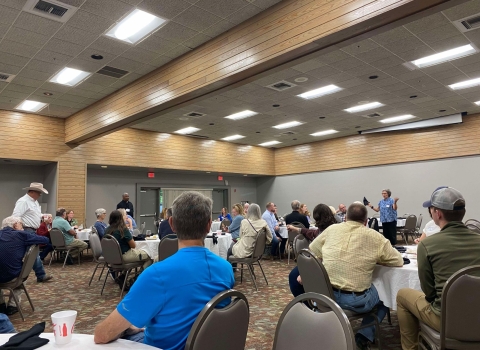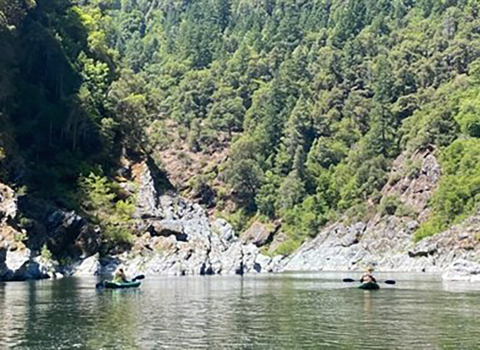Carl Lunderstadt has been Red-Carded since 1998, when he first started fighting fire as part of his collateral duties at Tetlin National Wildlife Refuge in Alaska. (The Incident Qualifications Card, or Red Card, certification is necessary to become qualified for wildland fire operations. Obtaining a Red Card involves a combination of classroom training, a field exercise, and physical fitness testing.) Twenty-five years later, Carl, now the refuge manager at Stillwater National Wildlife Refuge in Nevada, continues to participate in fire as part of his collateral duties at the refuge.
Carl has been at Stillwater National Wildlife Refuge for 15 years. Each of those years have brought their own adventures, and with each adventure the love and respect for wildland fire never faded. When Carl first moved to the refuge, he brought his two children with him. Austin, his youngest, was in 2nd grade when he first experienced life on the wildlife refuge.
As a child, Austin watched his dad prepare for prescribed fires on the refuge: packing his fire bag, gathering his helmet, gloves, and Nomex shirt and pants, and tying up his fire boots. The ritual always ended with Austin begging to be allowed to help.
“Not this time, Austin. You need a Red Card and training first,” Carl would reply.
After graduating high school, Austin attended the University of Nevada, Reno, where he earned a degree in Forestry. Upon graduation, Austin was finally ready to rekindle his love for fire. He accepted a seasonal wildland fire position with the Bureau of Land Management in Winnemucca, Nevada, where he spent two seasons suppressing wildfires. After those two seasons, Austin wandered back to his roots with the U.S. Fish and Wildlife Service when he accepted a wildland fire position at Little Pend Oreille National Wildlife Refuge in Washington, where he learned the tools of the trade for applying prescribed fire to the landscape to promote healthy habitat for wildlife.
As Austin was becoming a wildland firefighter, he and Carl realized they could finally work on fire projects together. So, when Austin volunteered to help with a prescribed fire at Stillwater National Wildlife Refuge in 2021, Carl couldn’t have been happier.
Carl, later recounting that first experience on the prescribed fire with his son said, “As I was driving the engine and watching Austin put fire on the ground with a torch, I couldn’t have been more thankful I was watching my son grow and learn the profession he’s always been in love with.”
“My dad has always been my role model. Throughout your life, you’re always learning – learning from this person and that person – but, this is one person I can learn from and then turn around and say, ‘That’s my dad!’ with a big smile on my face,” says Austin of the same experience.
Since that first prescribed fire, Austin and Carl have had the opportunity to work on one more together, also at Stillwater National Wildlife Refuge. Their goal is to work on many more prescribed fires together.
With several career decades in front of him, Austin will finish out this winter and welcome the spring at Great Dismal Swamp National Wildlife Refuge in Virginia where he will continue to help burn for wildlife habitat. If the right opportunity arises, Austin plans to make a full-time permanent career with the U.S. Fish and Wildlife Service in the wildland fire program.
As for Carl… Well, Carl lives by the words of a former supervisor who once wisely advised him to have a side-hustle within the U.S. Fish and Wildlife Service that he loved and made him feel alive. Carl’s next step in support of this passion is to become qualified as an Engine Boss.

